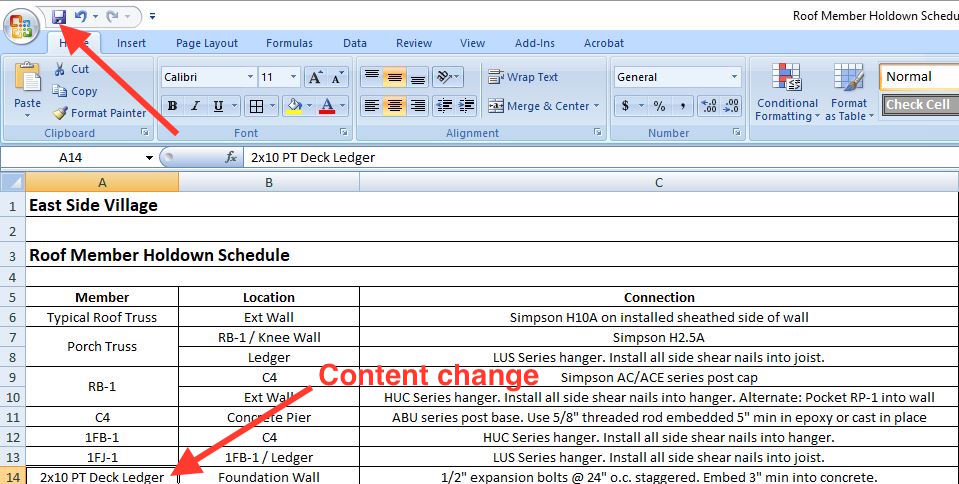Mastering the Art of Information Assimilation: How to Seamlessly Import Excel Data Into Revit
In this post, we will certainly lead you with the procedure of mastering the art of data integration. Get prepared to prepare your Excel data effortlessly and follow our step-by-step guide to import data into Revit. With our finest methods, you'll accomplish data combination success in no time.
Comprehending the Value of Data Combination in Revit
Comprehending the value of data combination in Revit is important for seamless importing of Excel data. When you integrate data from Excel into Revit, it permits you to successfully take care of and upgrade info throughout the entire job. This assimilation makes sure that your style and construction process is updated and accurate.
By incorporating information, you can easily import and upgrade criteria, routines, and even geometry in Revit. This removes the requirement for manual information entrance, saving you time and lowering the danger of errors. With Revit's information combination capabilities, you can keep consistency and precision in your job, while also boosting partnership among group members.

Discovering the Excel Documents Layout for Revit Combination

In order to effectively integrate Excel documents right into Revit, it is important to guarantee that the information is formatted properly. This includes effectively classifying columns and rows, as well as structuring the information in such a way that is suitable with Revit's data schema. Revit uses details specifications and categories to arrange information, so it is essential to line up the Excel information with these specifications to ensure a smooth integration.
In addition, it is necessary to keep in mind that Revit only sustains certain information types when importing from Excel. These consist of message, numbers, and dates. Any kind of other information types, such as solutions or conditional format, will not be identified by Revit and may trigger issues during the assimilation process.
Preparing Your Excel Information for Seamless Import Into Revit
To ensure a smooth combination procedure, you'll need to appropriately style and label the columns and rows in your Excel information prior to importing it into Revit. This step is crucial because it enables Revit to accurately translate and arrange your data. Beginning by examining your Excel data and recognizing which rows and columns include appropriate details for your Revit task. Make sure to identify each column with a detailed and clear header. This will certainly aid you and others easily understand the function of each column and prevent complication throughout the import procedure.
Next, guarantee that the information in each column is correctly formatted. As an example, if you right here have a column for dimensions, make certain that all measurements are constantly formatted in the very same systems of measurement. Revit depends on constant format to precisely translate and import data.
Additionally, it is essential to examine for any kind of vacant cells or variances in your data. Revit might not be able to review or import information from cells that are vacant or include errors. For that reason, it is recommended to assess your Excel information and tidy up any inconsistencies prior to importing it into Revit.
Step-By-Step Overview to Importing Excel Record Into Revit
As soon as you've properly formatted and classified your Excel information, you can easily import it into Revit by following this step-by-step overview. To begin, open Revit and browse to the "Insert" tab. Click on "Import CAD" and select "Import Excel" from the dropdown food selection. A new home window will show up, asking you to locate the Excel data you wish to import. Surf your computer and pick the Excel data, after that click "Open."
Following, a dialog box will certainly appear, permitting you to personalize the import settings. Right here, you can pick the worksheet you wish to import, specify the variety of cells to import, and pick the suitable units for your information. Once you've made your selections, click "OK" to proceed.
Revit will certainly now display a preview of your Excel information. Take a moment to examine the sneak peek and guarantee that every little thing looks appropriate. If required, you can make changes to the import settings by clicking on the "Setups" switch.
Ideal Practices for Information Assimilation Success in Revit
Ensure you comply with these best methods to make certain successful combination of information in Revit. Firstly, it is crucial to arrange your data in Excel before importing it into Revit. This means making sure regular calling conventions, correct format, and precise data representation. Next off, utilize Revit's integrated devices for information mapping. This will certainly enable you to match the columns in your Excel file with the corresponding parameters in Revit. Be conscious of the information and devices kinds when mapping the information, as any kind of disparities can lead to errors in the integration process.
An additional crucial practice is to regularly validate and upgrade your data. In addition, make use of information validation devices within Revit to identify any kind of errors or inconsistencies in the integrated data.
Finally, it is advised to develop a clear workflow for information integration. This consists address of specifying responsibilities and functions, establishing a communication network between group members, and establishing a normal cadence for information updates and testimonials. By complying with these ideal practices, you can make sure a effective and smooth integration of information in Revit, inevitably improving the effectiveness and precision of your project.
Final Thought
In final thought, understanding the art of data integration is important for smooth import of Excel submits into Revit. Comprehending the value of information combination in Revit is the first step towards successful combination.
When importing data from Excel into Revit, it is vital to understand the documents layout and just how it can impact the news combination process (revit tool). Revit makes use of certain specifications and classifications to organize information, so it is vital to line up the Excel data with these parameters to ensure a smooth combination
Be mindful of the information and systems types when mapping the data, as any inconsistencies can lead to errors in the assimilation procedure.
Additionally, make usage of data recognition devices within Revit to recognize any kind of mistakes or variances in the incorporated information.
